Design Eye Training : 106
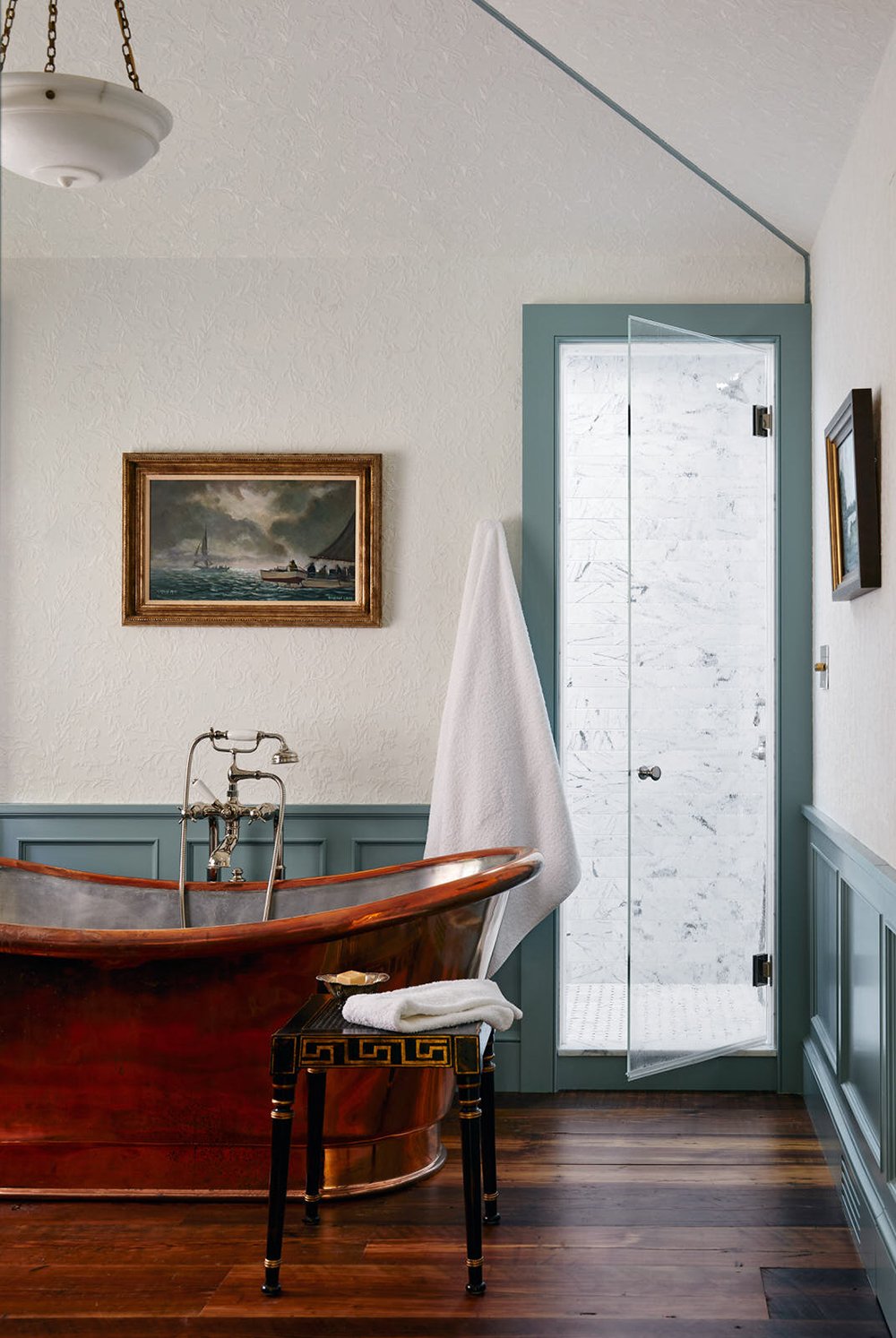
Who is ready to kick off the week with a new Design Eye Training post? I’ve really enjoyed this series! Today, we’ll be analyzing and admiring a gorgeous bath in a historic Maryland waterfront home, designed by the talented Lilse McKenna (follow her on Instagram here). The original section of the home was built in 1750! The bathroom we’ll be scrolling through was designed to feel like an 18th-century conversion. It boasts antique heart-pine floors and period-appropriate fixtures (with modern conveniences, of course). This one felt especially inspiring to me because I noticed many uncommon design elements. Click through to take a little tour and chat all things interior design with me… this one is especially fun, thanks to the historic and higher-end finishes.
To quickly recap… in our Design Eye series, we observe and admire design fundamentals like scale, texture, pattern, material use, lighting plans, color, floor plan & layout, and a variety of intentional styling & interior moments pulled together by the pros. It’s an exercise I used to practice often in design school, and one I still enjoy today. By discussing and breaking down well designed spaces in greater detail, you’ll begin to train your “design eye”, build upon the design fundamentals, and can apply some of these things to your own home, if they appeal to you. I also feel like this series can really help you hone in your personal aesthetic, determining what you like and dislike… and most importantly, why.
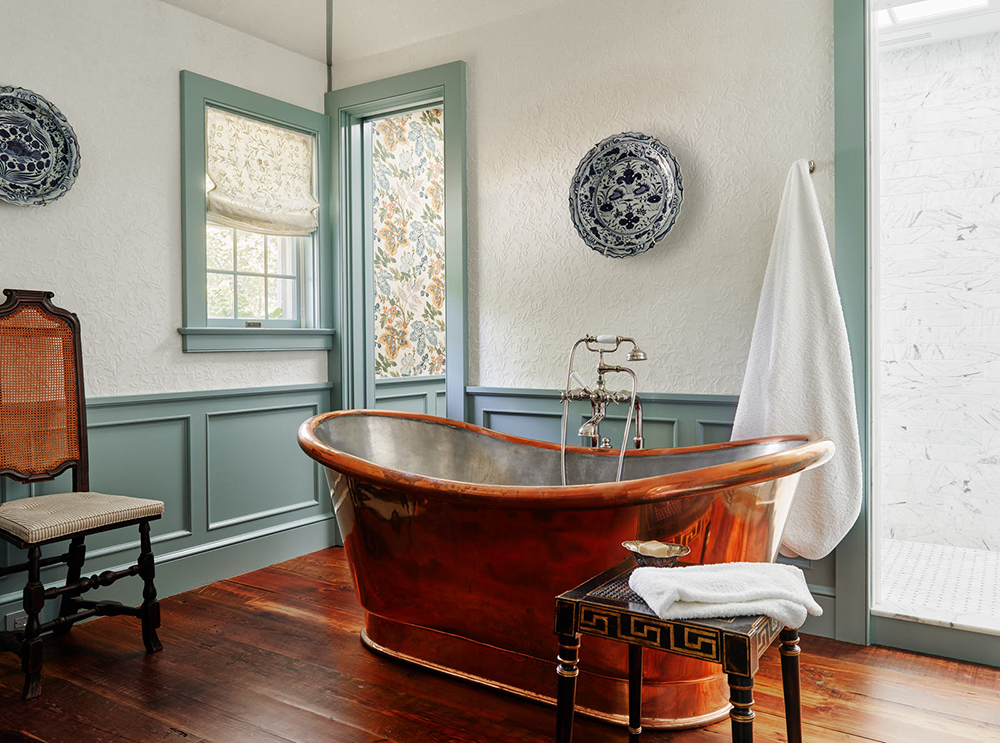
This stunning bathroom has a lovely color palette… it was the first thing to jump out at me (you know I love contrast trim). The cool aqua color is a really nice complement to the warm heart-pine wood flooring and copper fixtures. In addition to its beautiful shape, the soaking tub has a really nice patina going. That greek key table is also calling to me, beneath the plush white towels! I love the way Lilse mixed lots of metals and finishes throughout this space. I spy copper, polished nickel, antique brass, and even gold leaf. Normally, that would seem like a lot of warm metals to me, but they’re all working very well together. The millwork is simplistic with shaker style casings alongside the contrasting wainscoting that really anchors the room. I also caught a glimpse of a clean marble shower with timeless subway tile on the walls and a classic marble mosaic for the floor tile… see it in the background?
Below, the storage doors feel very modern to me in the way they were cut out, but I’m thinking this was an intentional decision to continue the historic look, without adding heavy doors or additional millwork to detract from the overall look. It really makes the room feel larger without taking away from the historic elements. I’m also borrowing that integrated vent inspiration for my office built-in! I’ve been testing samples for our baseboard this past week.
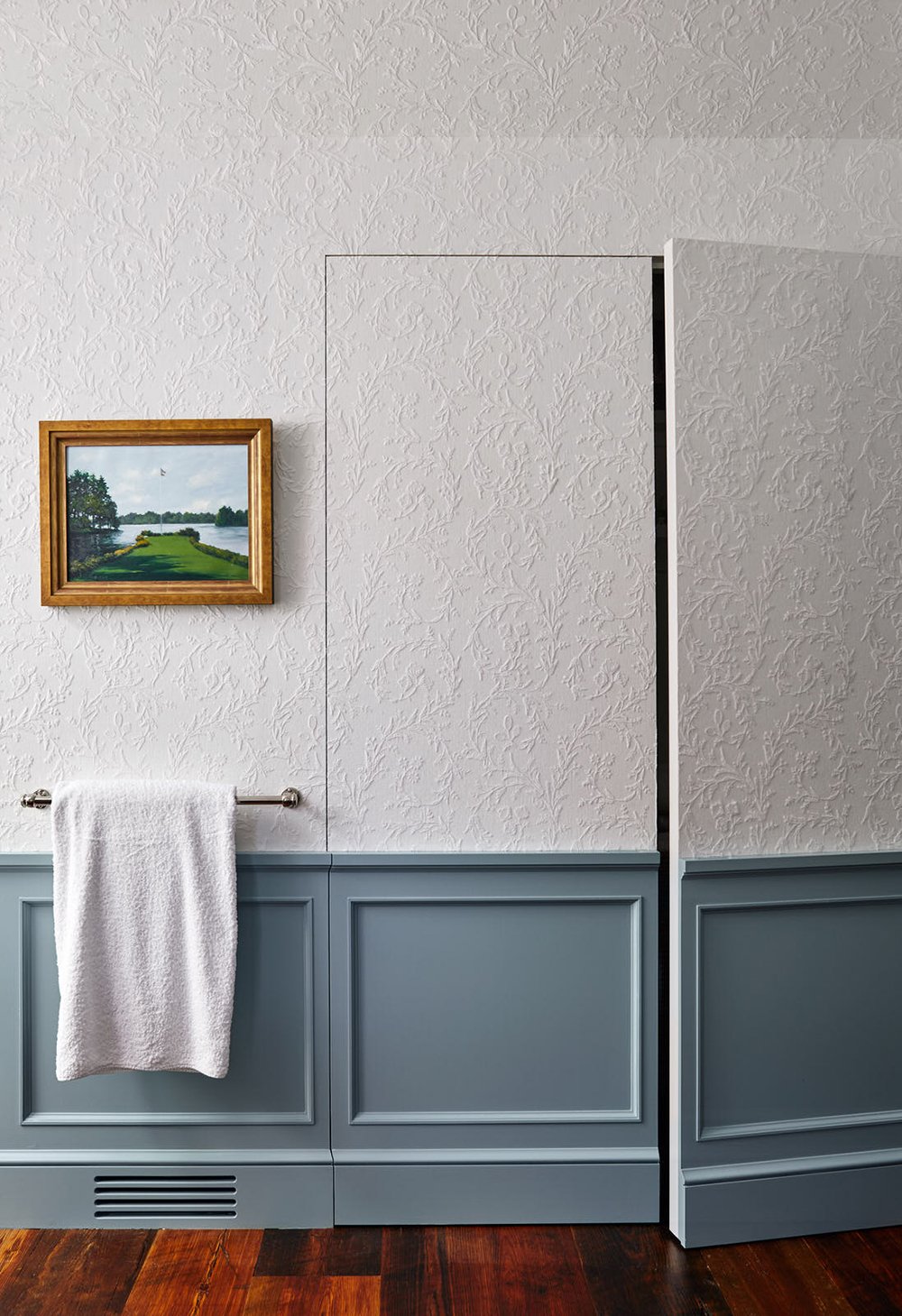
Despite the neutral white color, the patterned and embossed textural wallpaper really pushes this space over the top and adds interest- without feeling overwhelming. It really softens the space in a timeless way and emphasizes the historic architecture. The antique chest turned vanity is another genius move on Lilse’s part to create a room that is historically appropriate and transports you to 18th century design. The warm wood matches the flooring exactly, creating cohesion and warmth on that side of the room. I also spent a good amount of time zooming in to look at the objects sitting on the countertop (hello silver vanity set). It’s beautifully styled and the addition of lime towels and greenery was another unexpected design surprise that seemingly works well. It’s not a combination I would ever try, but seeing it here inspires me to pair more unexpected colors.
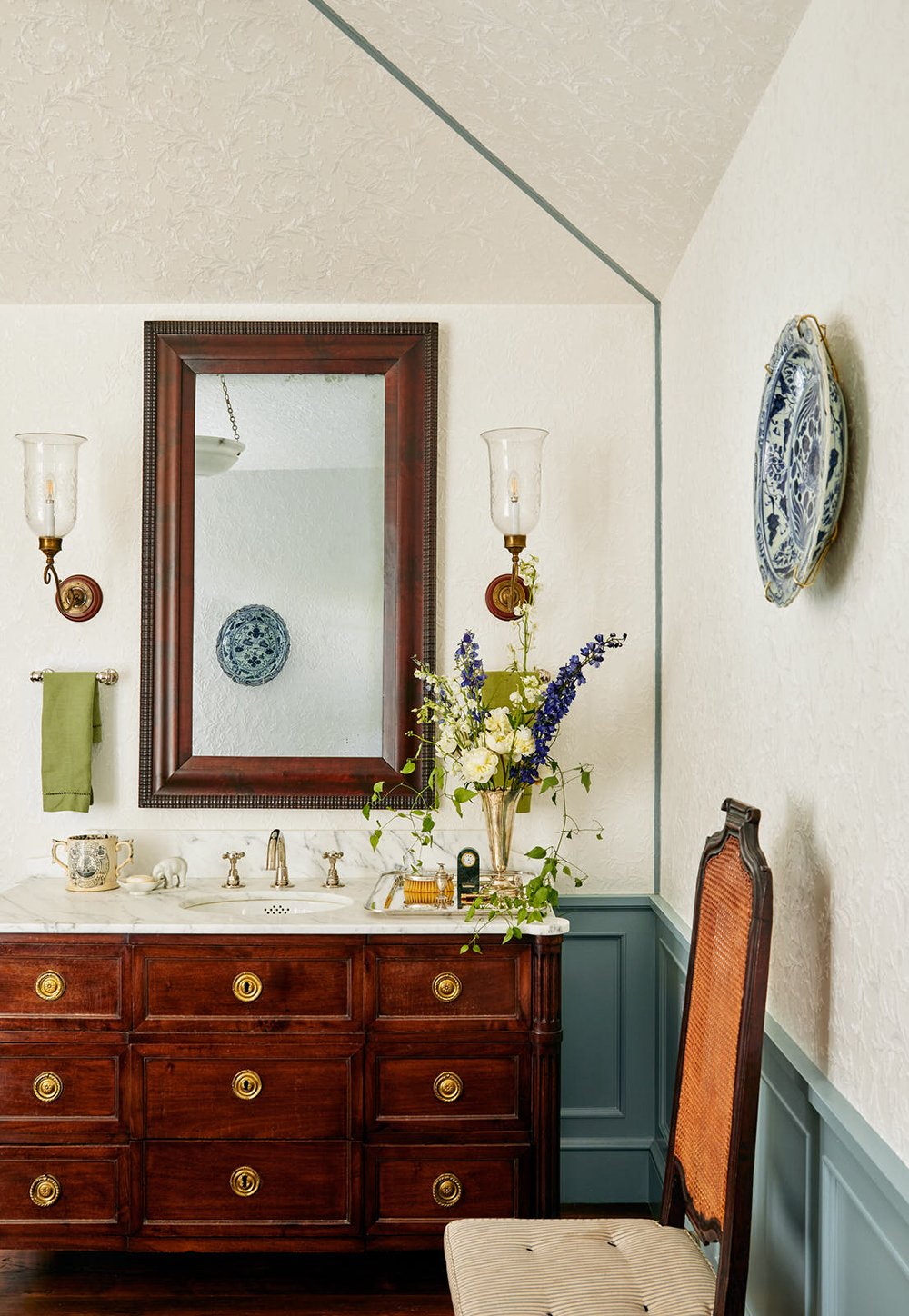
I also observed the blue & white porcelain serving bowls or plates used as wall decor (another trend I’ve seen gaining popularity lately). The round shape is a nice repeated element that mirrors the vanity hardware and adds a punch of historic color to the embossed wall treatment. The antique cane chair is another intentional piece that adds warmth, texture, and history to the space. In addition to all of the antiques, you’ll also notice plenty of modern amenities… like the beautiful light switch controls. This is a perfect example of pairing modern with traditional in a way that is functional and beautiful. Who would’ve guessed that a piece of acrylic or lucite would fit seamlessly into an 18th century bath? It’s wonderful!
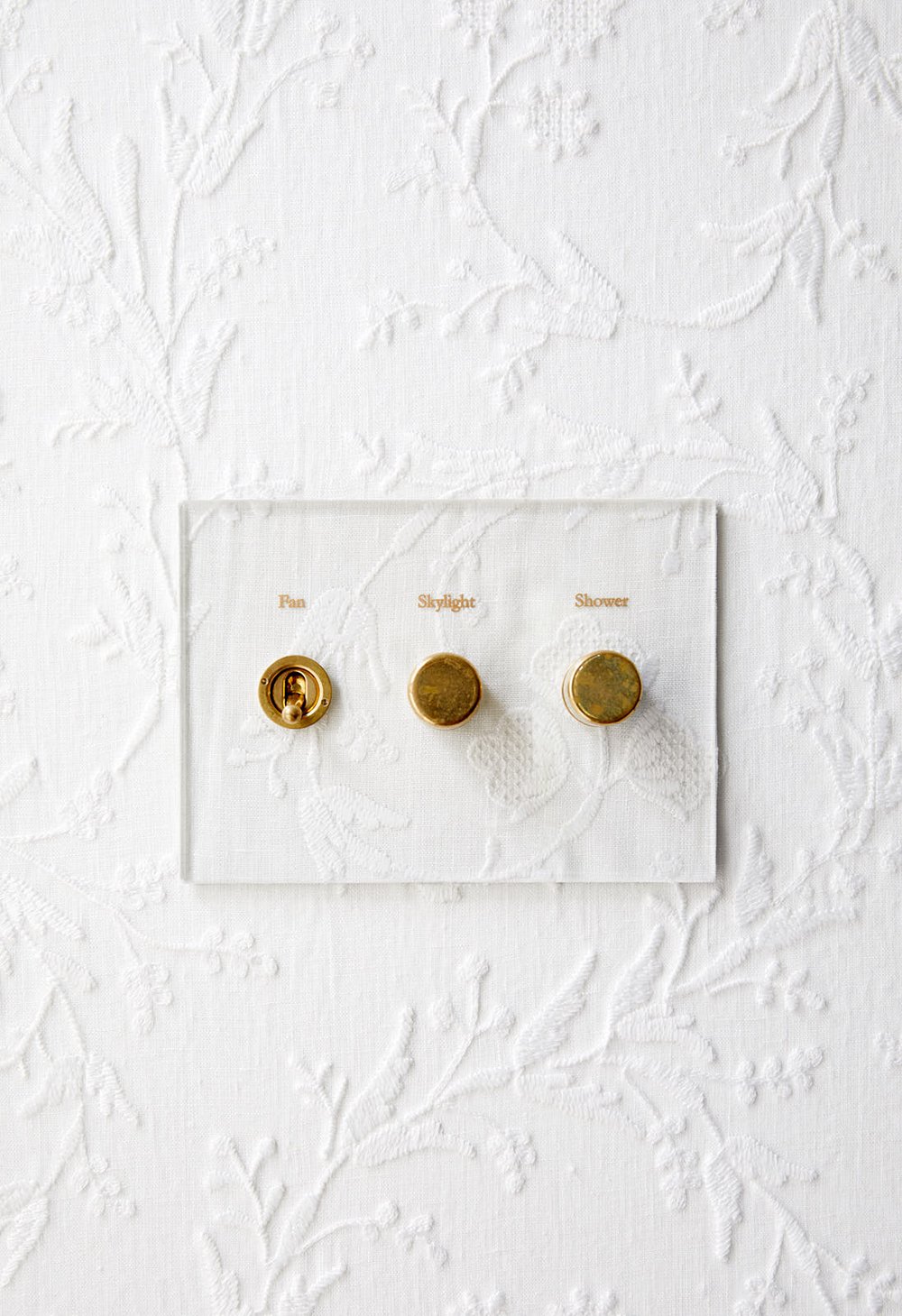
In the powder room, you’ll notice more wallpaper, but this time- vibrant, colorful, and the floral pattern is very bold. It’s a fun way to define spaces, create a designerly look, and implement color. I also enjoyed seeing the painted ceiling with the traditional skylight. If I were ever to have a skylight, I’d want it to look like this. Did you notice the vintage nautical art scattered throughout? How about the pleated sconce shades? There are so many thoughtful details that really make this bathroom feel special.
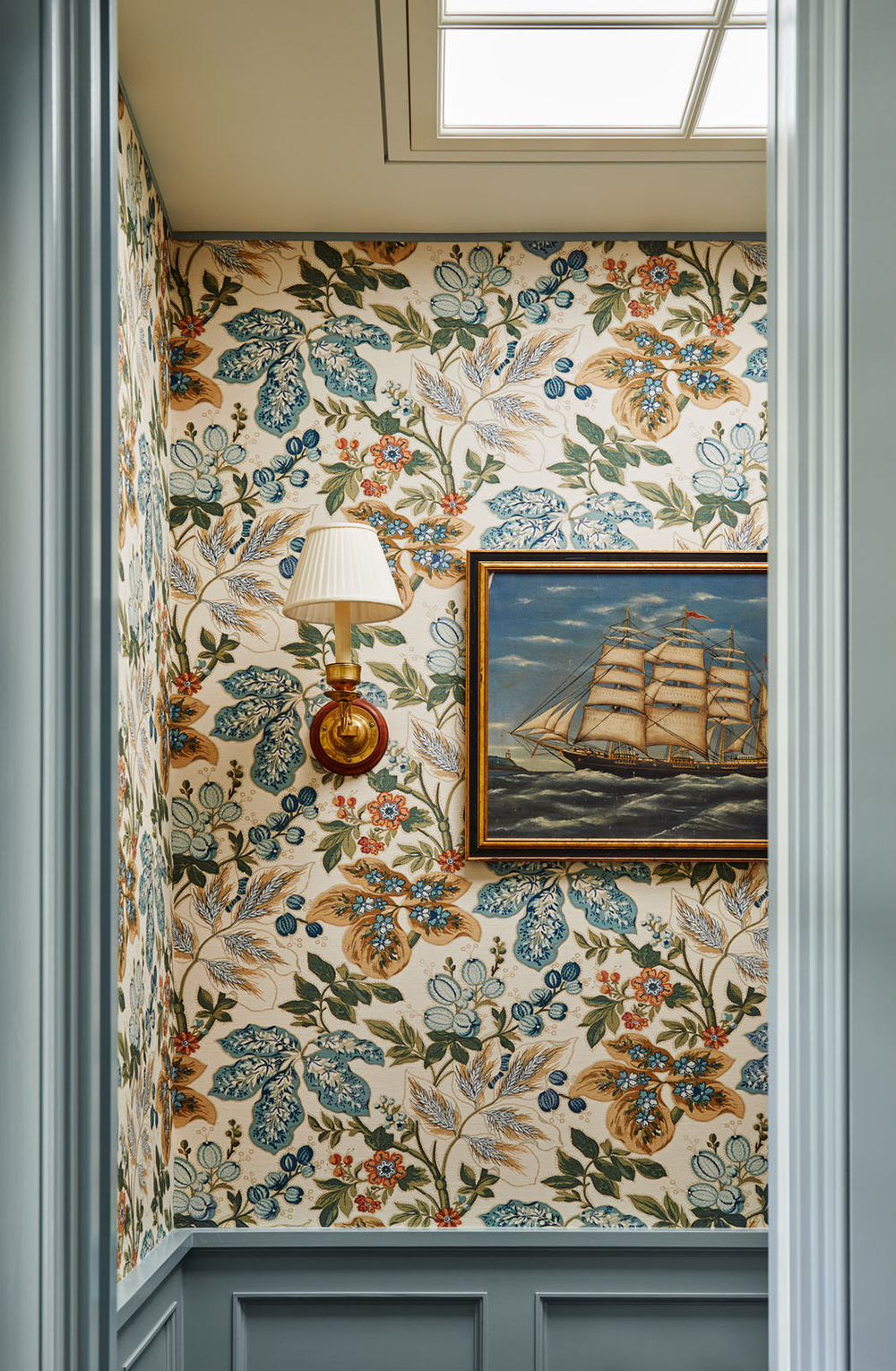
The paint color feels very reminiscent of my guest bedroom (Sherwin-Williams Halcyon Green)… perhaps that’s why I’m so attracted to it? I was able to find many of the sources as seen in this bathroom, which I’ll drop into a slider below. Most of them are vintage or antique, and some are quite costly- but there are also some budget finds in there as well. Another Design Eye post is in the books… did you enjoy this one? I can’t wait to hear the things you noticed and admired in this historic bathroom! Did you find any inspiration that can translate to your own home? Here’s to a fantastic week ahead.

